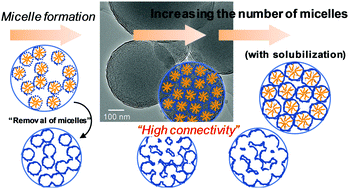The rational synthesis of aerosol-assisted alumina powders having uniform mesopores and highly accessible surfaces
Abstract
Alumina is one of the most useful inorganic solids because its γ-phase has frequently been applied as a catalytic support, and it meets the demand of materials with high porosity, which can enhance catalytic properties by increasing the dispersion of metal catalysts. From the viewpoint, a synthetic strategy using amphiphilic organic molecules has attracted considerable attention for obtaining a wide variety of mesoporous inorganic solids having enough surface areas. However, it has so far been quite difficult to prepare such mesoporous alumina powders because starting aluminum sources, such as their chlorides and alkoxides, show high reactivities in the presence of water. Thus, the formation of composite micelles and subsequent organization of highly porous structures have been achieved under very restricted synthetic conditions. Following our recent study on an aerosol-assisted synthesis for obtaining mesoporous alumina powders having high surface areas (nearly 540 m2 g−1) by enhancing the connectivity between the surfactant-assisted mesopores, in this study, we could describe another rational and reliable synthetic route in order to obtain high-surface-area mesoporous alumina powders (more than 500 m2 g−1). Several important factors for increasing the quality of aerosol-assisted mesoporous alumina powders (e.g., the sphericity of alumina particles and the connectivity of the surfactant-assisted mesopores) are also summarized, which are mainly supported by TEM and SEM observations and N2 adsorption measurements.



 Please wait while we load your content...
Please wait while we load your content...